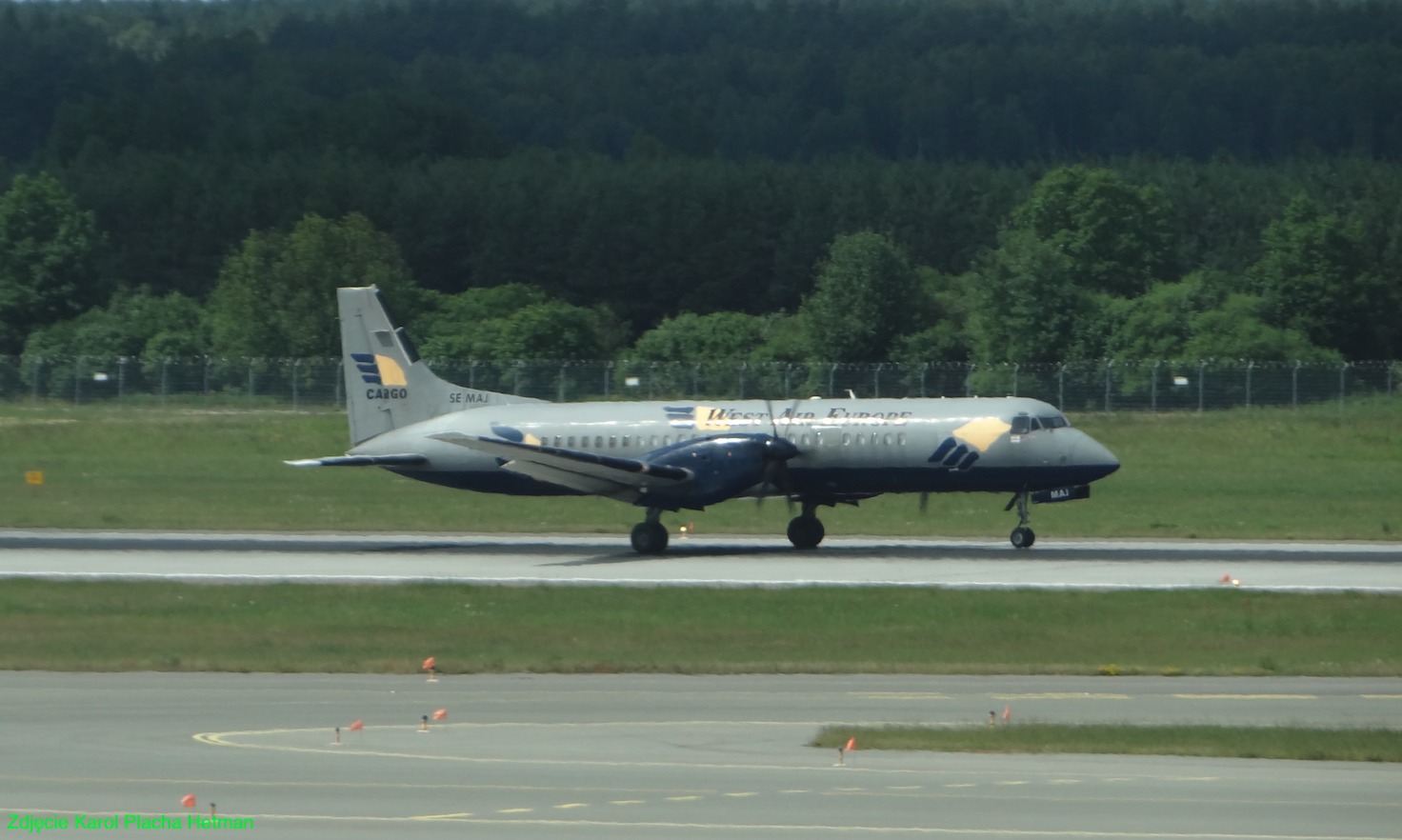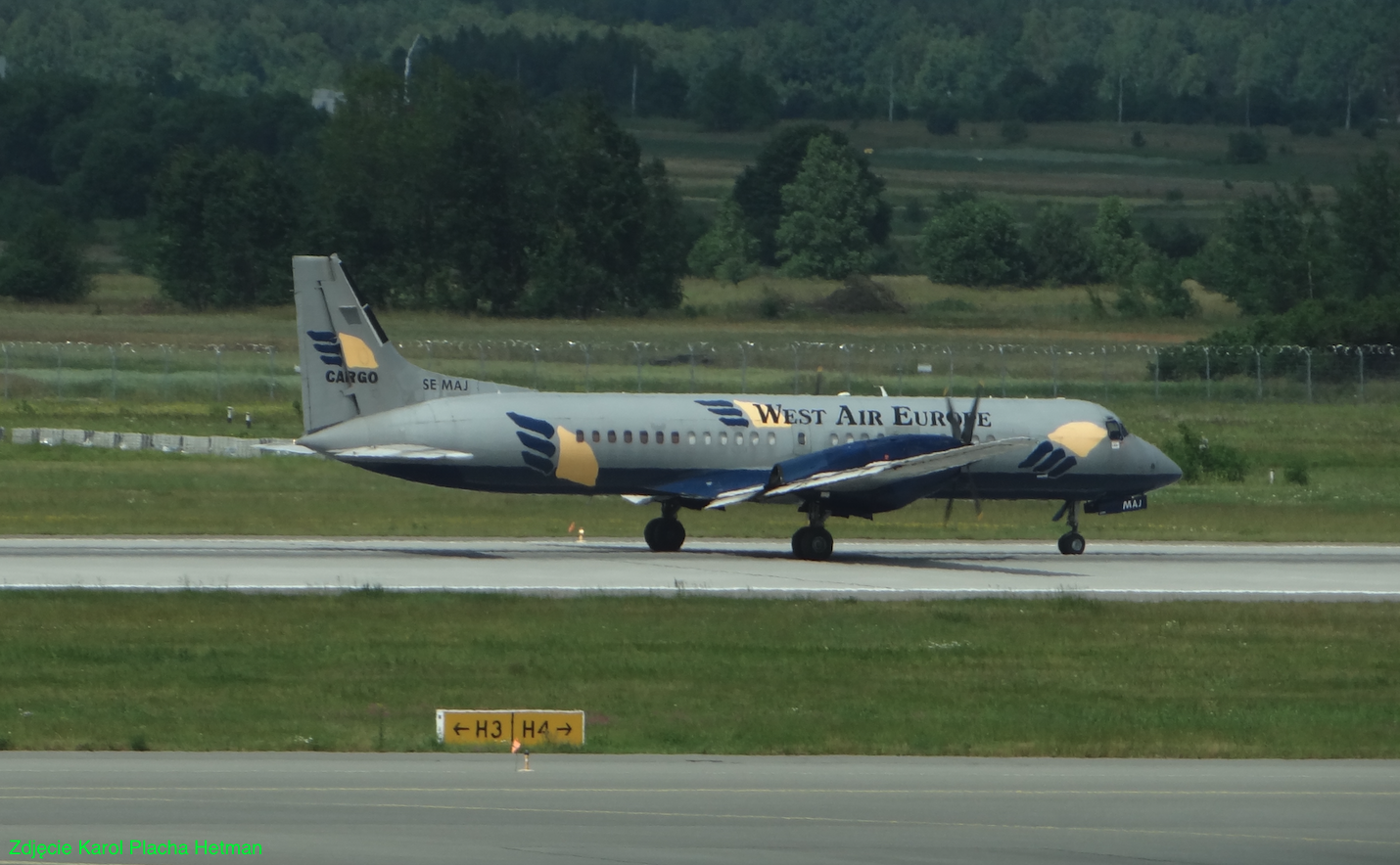Kraków 2023-11-15
British Aerospace ATP.
British Aerospace ATP (Advanced Turbo-Prop) for aircraft in the UK at British Aerospace. The first batch will be held on August 6, 1986. The aircraft entered service in 1988. Production lasted from 1988 to 1996, but only 65 units were built.
British Aerospace ATP (Advanced Turbo-Prop) for airliner and was valid by British Aerospace. The design was an evolution of the basic Hawker Siddeley HS 748, a replacement for the successful Feederliner of the 1960s.
The ATP aircraft was developed in the 1980s as a response to the 1973 oil crisis. The designers believed that it would lead to a feeder aircraft that would be powered by turboprop engines, about off-line and fuel efficiency. Designers from other subsidiary companies began to cooperate. There was a lot of competition in this entry. Existing structures; de Havilland Canada Dash 8, ATR 42 and ATR 72. Therefore, only 65 ATP aircraft were built and in 1997, the production line was closed.
The last European operator of the ATP flight, West Air Sweden, last flight on February 24, 2023. In 2023, only 4 ATP aircraft were used for flights.
ATP structure.
The aircraft was developed for short and medium-range flights. By using turboprop engines, significant fuel savings were expected, and by using new propellers, noise was expected to be reduced. It was decided that the preferred option would be to develop the existing Hawker Siddeley HS 748 airliner. The fuselage was lengthened to 26.01 m (85.3 ft) and the wingspan was increased to 30.62 m (100.5 ft). The passenger cabin was designed for 64 passengers. But depending on the customer’s wishes, it was possible to make the seats more dense. The aircraft was sandwiched between an HS 748, which carried 50 passengers, and a British Aerospace 146, which carried 100 passengers. The crew cockpit has been redesigned to make the work of two pilots easier. A centralized panel was designed to alert the crew about faults. The avionics are digital with multi-function displays, making the cabin a glass cockpit type. The aircraft was aerodynamically improved; pointed nose, improved wingtips. More windows were installed in the fuselage.
The drive has been changed compared to the HS 748; the twin Rolls-Royce Dart turboprop engines were replaced with Pratt & Whitney Canada PW126 engines, more fuel efficient. Each engine drove a specially designed six-blade propeller developed jointly by British Aerospace and the American specialist Hamilton Standard. These large diameter propellers are designed to rotate slower than their traditional counterparts to generate less noise. The plane is relatively light. The aircraft’s cruising speed has been significantly increased compared to its predecessor. According to BAe reports, between 1987 and 2002, the company had ambitions to sell approximately 300 ATP aircraft.
On 6 August 1986, the ATP prototype made its maiden flight from Manchester Airport, piloted by test pilot Robby Robinson.
Competition in the feeder aircraft market was intense. The companies competing were: Fokker, Bombardier, ATR. The companies decided to reach an agreement and start cooperation. In 1995, a partnership called Aero International Regional was established. However, after a few months the partnership collapsed.
In 1996, British Aerospace built the last 65th copy of the ATP aircraft. In mid-1997, BAe announced that ATP production was permanently discontinued.
In 2000, the ATP Freighter (ATPF) version was developed based on existing ATP aircraft and promoted to cargo operators. The aircraft is equipped with modified cargo doors from the HS 748 aircraft. The ATPF aircraft can carry 30% more cargo than its predecessor, with a 10% increase in operating costs. Under this program, an initial batch of six ATP aircraft were converted to freighters for the cargo air carrier West Air Sweden.
Power engine.
Two Pratt & Whitney Canada PW126 turboprop engines, 2 x 1.978 kW (2 x (2.653 shp). BAe/Hamilton Standard 6-blade propellers, 4.19 m (13 ft 9 in).
T-T British Aerospace ATP data:
Crew of two pilots and two cabin crew members. Passengers: 64 people. Length 26.00 m (85 ft 4 in). Wingspan 30.63 m (100 ft 6 in). Height 7.14 m (23 ft 5 in). Supporting area 78.3 m2 (843 sq ft). Curb weight 13,595 kg (29,972 lb). Maximum weight 22,930 kg (50,552 lb). Fuel capacity 6,364 litres (1,400 imp gal; 1,681 US gal). Cruising speed 496 km/h (308 mph, 268 kn). Range 1,825 km (1,134 mi, 985 nmi) with 64 passengers. Coverage range 4,070 km (2,530 mi, 2,200 nmi). Operating ceiling 7,600 m (25,000 ft).
British Aerospace ATP SE-MAJ aircraft:
Serial number 2038. First flight on April 29, 1991 (G-SLAM). Then G-BTNI. In October 1991, handed over to Turkish Air Transport (TC-THU) under lease. In April 1994, transferred to British Aerospace Asset Management (G-BTNI). In August 1994, as a rental aircraft (G-OEDI). In November 1994, transferred to Euro Direct Airlines (G-OEDI). In April 1995, he returned to British Aerospace Asset Management. In November 1996, loaned to Canarias Regional Air (EC-GKJ). In February 1998, he joined Air Europa Express (EC-GSE). In January 2002, transferred to BAE Systems Asset Management (G-BTNI). It was rebuilt into CARGO. In 2002, transferred to Magic Blue Airlines (PH-MJG). In August 2006, transferred to West Air Sweden (SE-MAJ). In January 2012, transferred to West Air Europe Netherlands (LX-WAD). In October 2013, handed over again to West Air Sweden (SE-MAJ).
Written by Karol Placha Hetman


